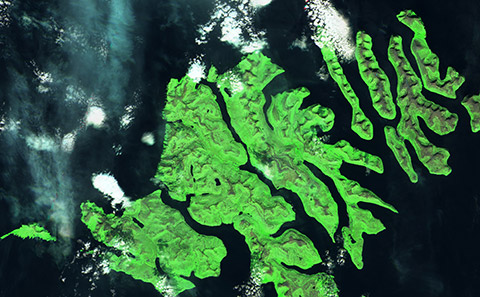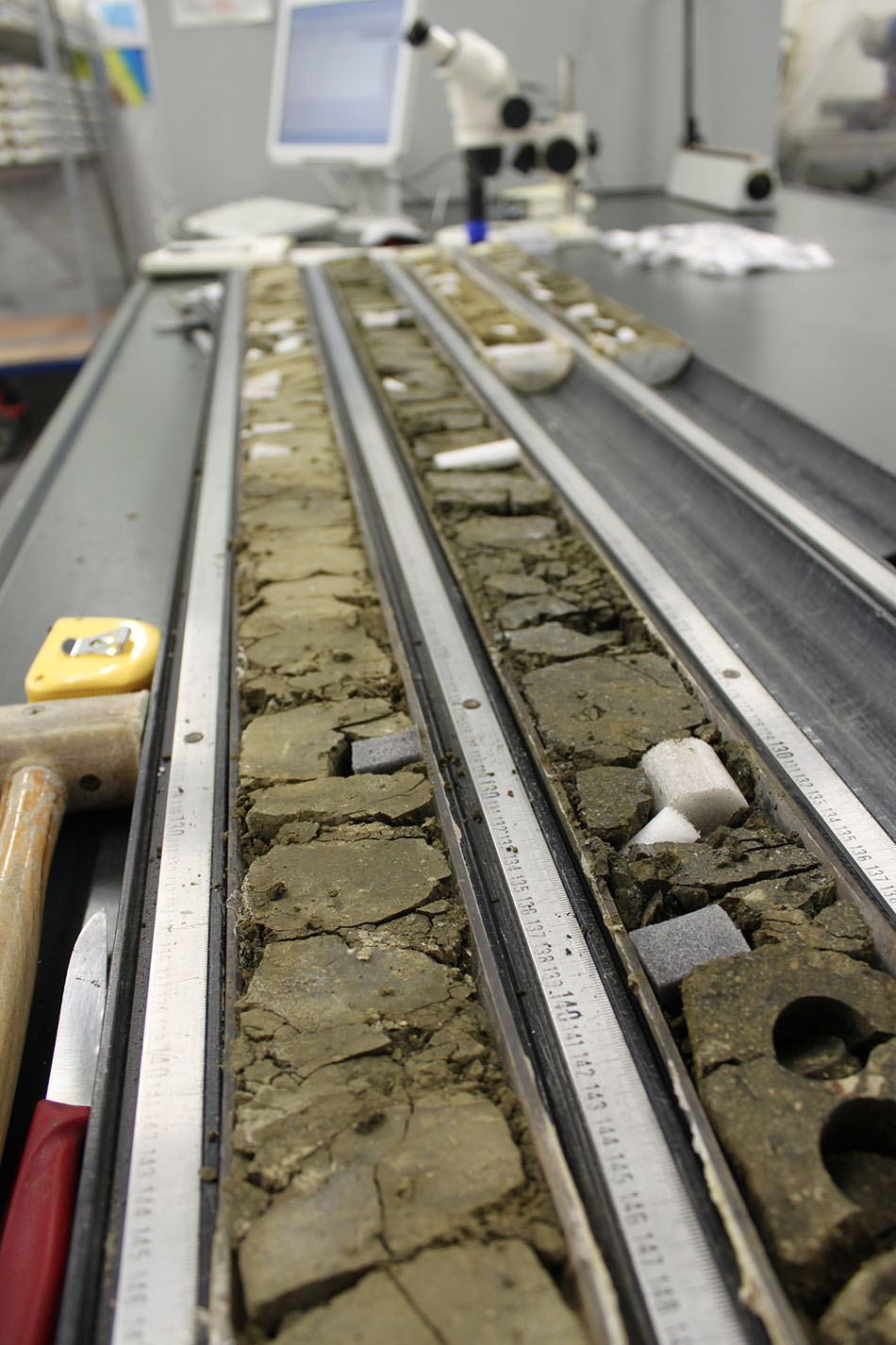Stretching of the continents drove ancient global warming event, say scientists

Scientists at the University of Southampton have discovered that stretching of the continents is likely to have caused one of the most extreme and abrupt episodes of global warming in Earth history.
The researchers, working with colleagues at the University of Edinburgh, the University of Leeds, the University of Oldenburg, the University of Florence and the Chinese Academy of Sciences, studied the effects of global tectonic forces and volcanic eruptions during a period of extreme environmental change 56 million years ago.
During this time, some sequence of events caused the planet to warm by 5-8˚C, culminating in the ‘Palaeocene-Eocene Thermal Maximum’ or PETM, which lasted about 170,000 years. This caused the extinction of many deep-sea organisms, reshaping the course of evolution of life on Earth.
The team propose that the extensive stretching of the continental plates in the northern hemisphere – rather like the pulling of a toffee bar that thins and eventually separates – massively reduced the pressures in the Earth’s deep interior. This then drove intense, but short-lived melting in the mantle – a layer of sticky, molten rock just below the planet’s crust. The team show that the resulting volcanic activity coincided with, and likely caused, a massive burst of carbon release into the atmosphere linked to PETM warming.
The researchers’ findings are published in the journal Nature Geoscience.

The great speed and magnitude of warming mean that the PETM event is often considered as an ancient analogue for understanding present-day warming, even though the mechanism is completely different.
“Despite the importance and wider relevance of the PETM to global change today, the underlying cause is highly debated” says Dr Tom Gernon, an Associate Professor of Earth Science at the University of Southampton and lead author of the study. “It’s generally agreed that a sudden and massive release of the greenhouse gas, carbon, from the Earth’s interior must have driven this event, yet the scale and pace of warming is very hard to explain by conventional volcanic processes.”
Using archives of rock drilled beneath the seafloor near the edge of the Atlantic Ocean, the team found critical evidence for an abrupt and widespread episode of volcanic activity across the North Atlantic Ocean that lasted just over 200,000 years, strikingly similar to the duration of the PETM.
This finding prompted the team to investigate a broader expanse of the North Atlantic region, including Greenland and the Faroe Islands. Here, they found that kilometre-thick piles of lava that started to erupt just before the PETM show unusual compositions that point to a significant increase in the amount of melting of the uppermost solid part of Earth’s mantle beneath the continent.
“This finding is significant, because we know that parts of the continental mantle in this region are enriched in carbonates, a major source of carbon”, explains Dr Gernon. “This rapid increase in mantle melting likely released a very large volume of carbon – certainly more than we had previously expected”.
The intense volcanic activity occurred just as the continental landmass that united Greenland and Europe was most intensely stretched by plate tectonic forces. Eventually, North America and Greenland finally separated from Europe, leading to the birth of the North Atlantic Ocean. The scientists believe it was this final phase of stretching that brought about substantial melting in the Earth’s mantle, leading to massive carbon release, and in-turn, global warming.
The team used a range of different models to estimate how much carbon could have been released via this process. “Using physically realistic estimates of the key characteristics of these volcanic systems, we show that the amount of carbon needed to drive warming could have been attained by enhanced melting” says Dr Thea Hincks, Senior Research Fellow at the University of Southampton and co-author on the study.
The scientists conclude that rapid gas release from the solid Earth plays a major role in driving abrupt warming events like the PETM, which are very likely to have occurred during many other times in Earth history. “Such rapid events cause a fundamental reorganization of Earth’s surface environment, altering vast ecosystems”, concludes Dr Gernon.
